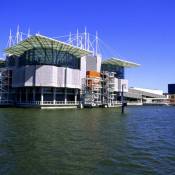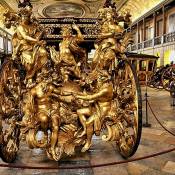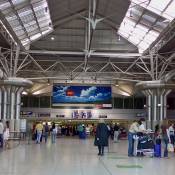Teatro Nacional de Dona Maria II
This majestic Neoclassical building at the northern end of Lisbon's Rossio Square is dedicated to Queen Mary (Maria) II of Portugal. Designed by Italian architect Fortunato Lodi, it opened in 1846 and features a large portico with six beautiful Ionic columns which had been reclaimed from the ruins of the Convent of St Francis after it was damaged in the 1755 earthquake. The portico is topped by a triangular pediment with an engraving of the god Apollo, who was, amongst other things the god of art, music and poetry, surrounded by the Muses.
The original, richly decorated, 19th century interior of this fine building was gutted by a fire in 1964, one week after the staging of a performance of Macbeth. Was this a coincidence or a reminder of why so many of those who work in theatre regard "The Scottish Play" as cursed?
Long before the theatre was built, Lisbon's Estaus Palace stood on this spot. In the 16th century this sumptuous building had been the seat of the Inquisitorial Courts, and was said to have housed torture chambers. Public executions and auto-da-fe took place right here in Rossio Square. It is therefore perhaps entirely fitting that a statue of Renaissance playwright Gil Vicente, some of whose works were banned by the Inquisition, stands above the theatre’s portico.
There are two theatres in the building, which has a varied programme of contemporary and classical productions.





